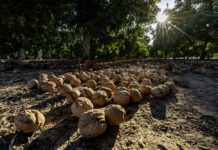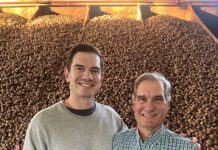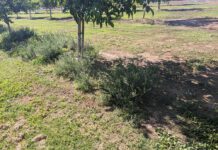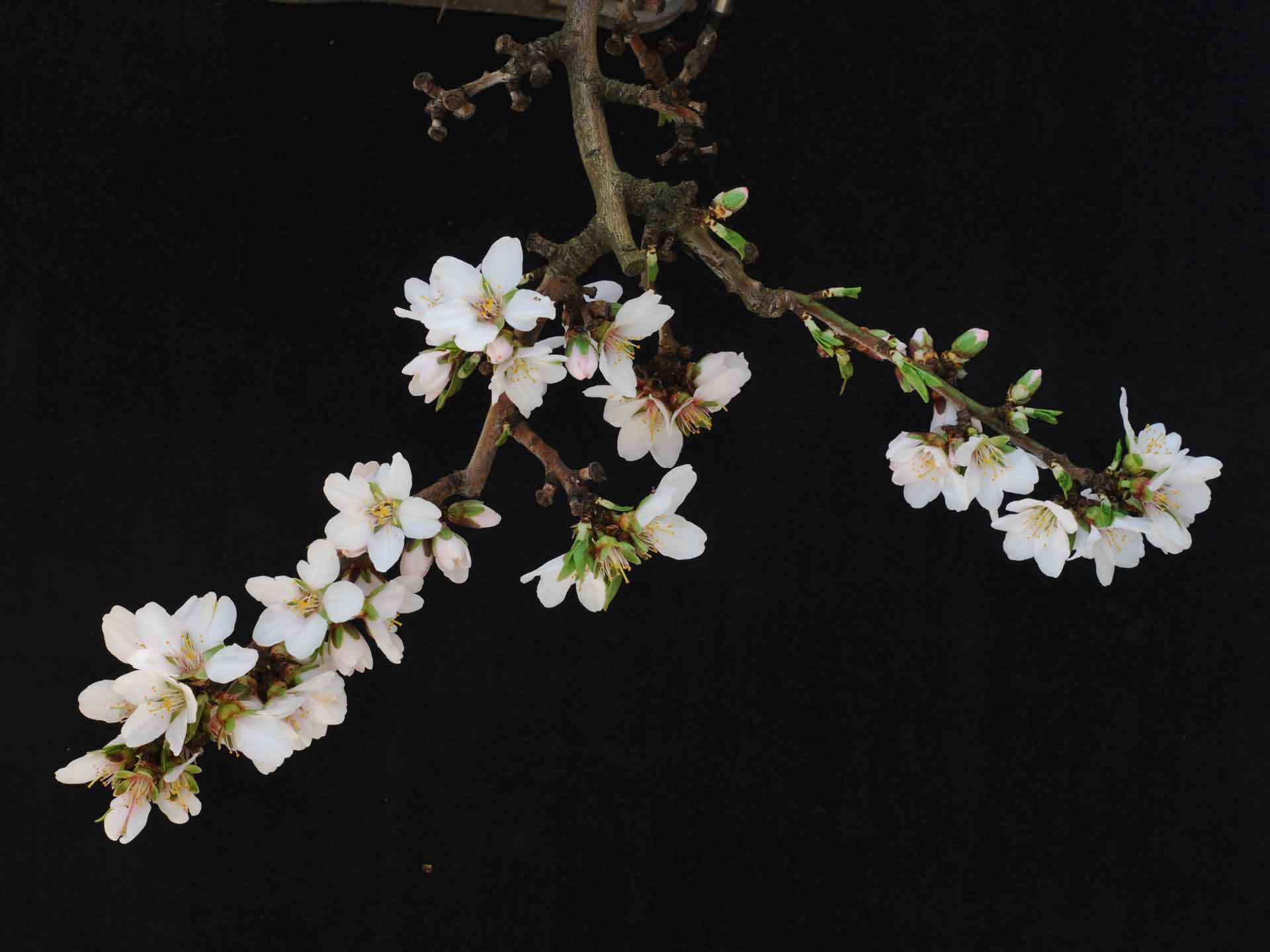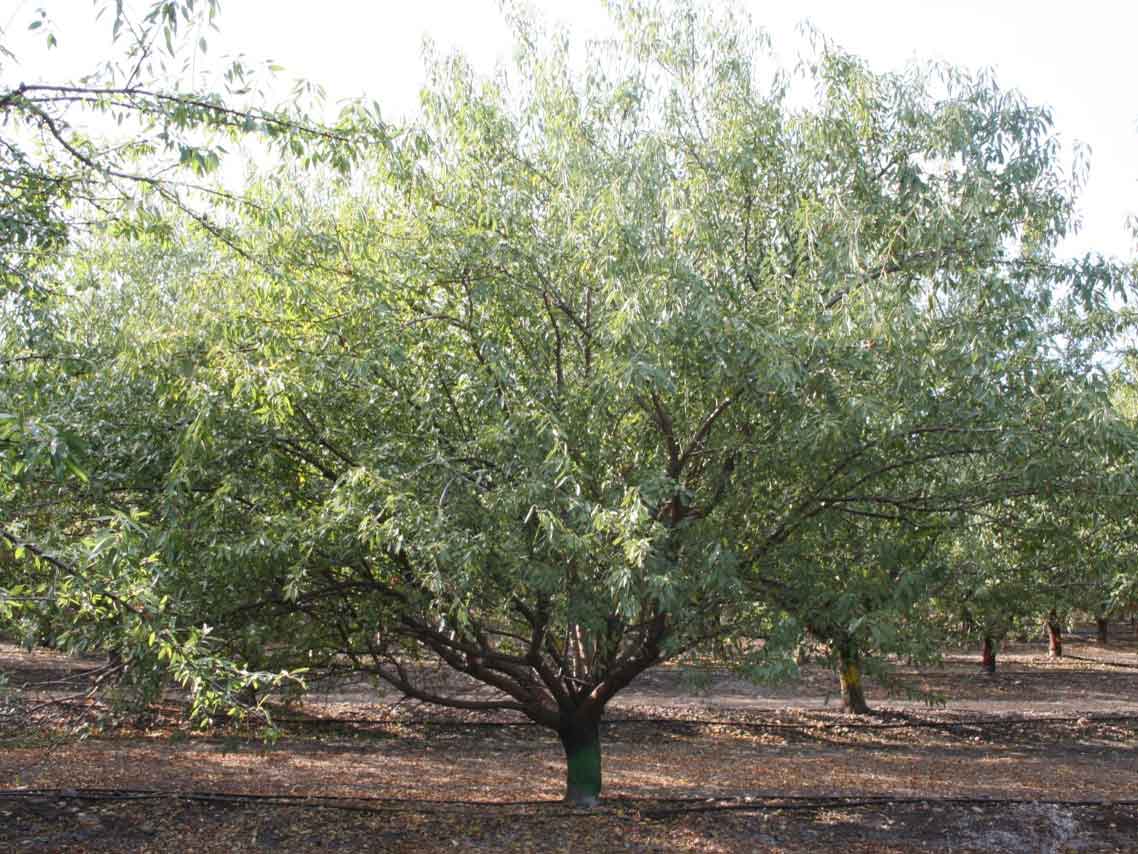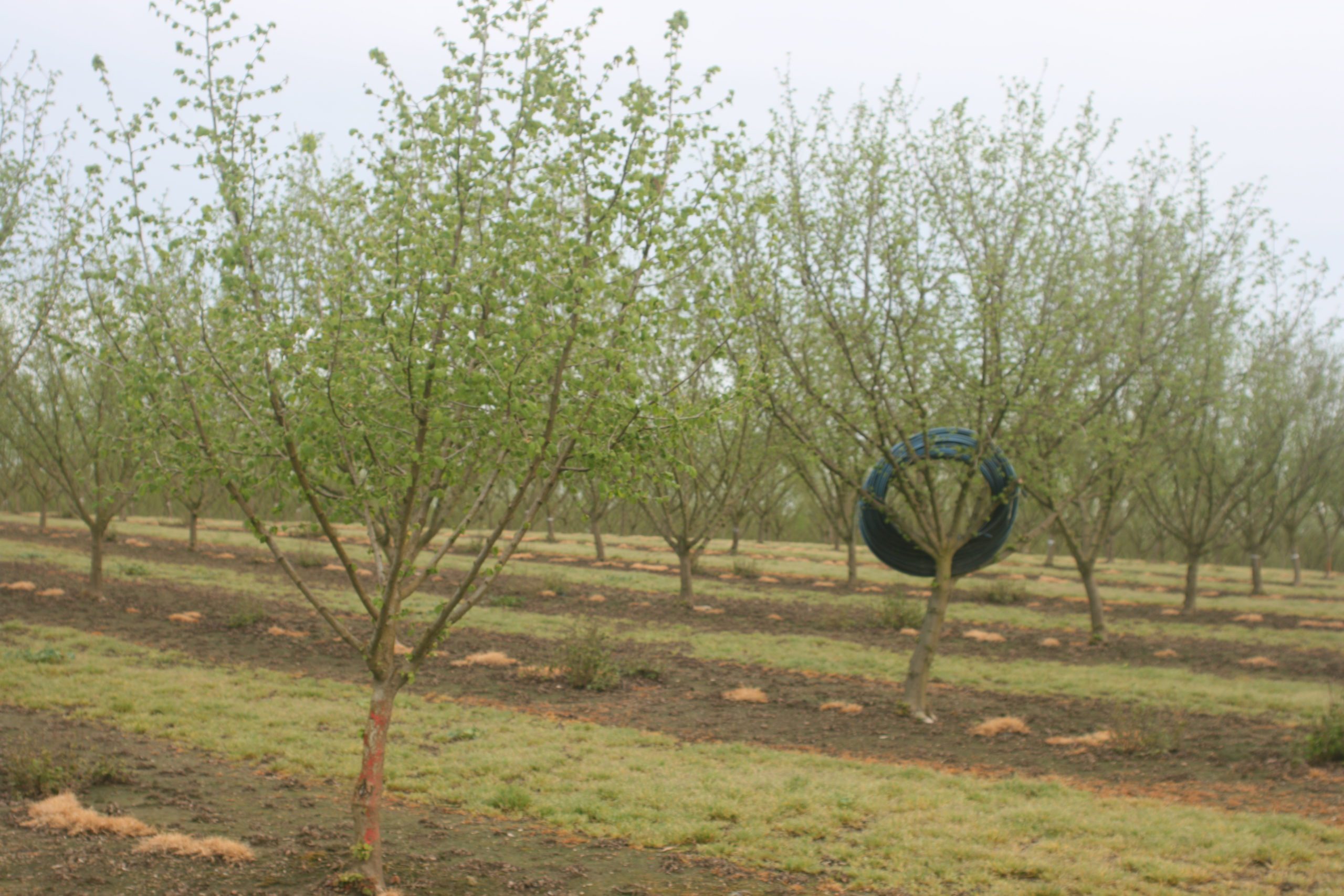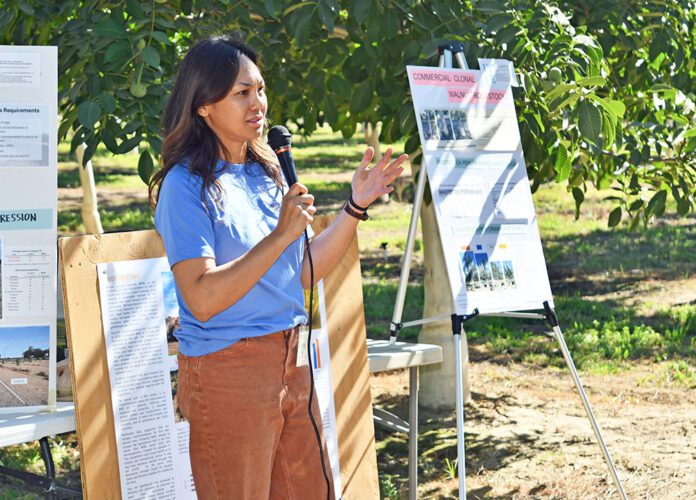
Listen to the audio version of this article. (Generated by A.I.)
Brent Holtz, a UCCE orchard systems farm advisor in San Joaquin County, and fellow researchers have studied whole-orchard recycling (WOR) of almonds since 2000. While they have found a whole host of benefits, he said they also noted a few caveats.
But not nearly as much is known about WOR of walnuts. To help fill the knowledge gaps, UCCE Orchard Systems Advisor Clarissa Reyes, Holtz and their colleagues are conducting three separate walnut field trials.
The oldest is in its fifth leaf near Rio Oso. This one, started by Tree Crop Advisor Emeritus Janine Hasey, also looks at whether different rootstocks respond differently to WOR. Reyes, who serves Sutter, Yuba, Butte and Placer counties, has since taken it over.
In addition, Reyes has a trial south of the fifth-leaf orchard while Holtz has a trial in San Joaquin County. The latter two were started in 2024, and both look at tree response under chipping and non-chipping environments.
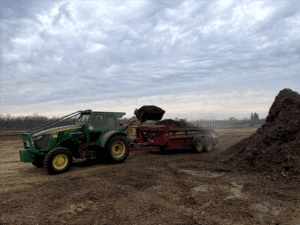
Getting Ahead
Rio Oso walnut grower Mat Conant offered up the 4-acre block for the rootstock trial and the 10-acre block for the newer trial to get ahead of what he sees as looming restrictions.
Currently, producers in the Sacramento Valley can burn orchards provided they obtain the necessary burn permits. A handful of co-generation plants also continue to take biomass to convert it into electricity.
Recycling an orchard costs about twice as much as burning, although a handful of state and federal programs may be available to offset some of the expenses, Reyes said.
Conant said he decided to cooperate in the WOR trials after looking to the San Joaquin Valley and seeing the inevitable. Under San Joaquin Valley Air Pollution Control District rules, orchard owners in the San Joaquin Valley can no longer dispose of their old trees by open-field burning. Area co-gen plants also have shuttered.
That leaves orchard owners with only a few options. Among them are WOR, where orchards are pulled, ground, and the chips spread and incorporated into the soil.
Conant said he also hoped the Sutter County trials would answer three questions he had.
“I’ve always wondered what rootstock I should plant,” he said.
About 20 years ago, Conant participated in a rootstock trial, but it did not include the newer offering Grizzly and was on virgin soil.
“It wasn’t very revealing,” he said. “This one is much more revealing.”
The 4-acre block, which has been in walnuts since the early 1910s, consists of areas of loamy and sandy soils. The block also has high levels of nematodes, oak root fungus and crown gall, which should put the rootstocks to the test, Reyes said.
Conant said he chose not to fumigate before replanting because he is not sold on the efficacy of the latest products.
“We’ve been tracking soil nutrients from the beginning of the trial and will be collecting data on yields. We will be able to see if there are cumulative effects as there are in almonds.” – Clarissa Reyes, UCCE
Ground Prep
In the fifth-leaf trial, Conant applied Garlon to the old walnut trees to stop growth, then had a company pull and grind them. Within a matter of weeks, he prepared the ground for the new orchard.
One of the big differences between recycling almond orchards and walnut orchards is the sheer amount of biomass produced by walnuts. An almond orchard may yield 40 to 60 tons of chips per acre while a walnut orchard may yield 80 to 100 tons per acre, Holtz said.
As a result, he recommended growers incorporate walnut chips about 1 foot deep into the soil compared to 6 inches for almond chips.
Conant used a drop spreader to apply the chips in strips, a much slower process than broadcasting, so researchers could evaluate rootstock responses to different treatments. The chips were applied to the WOR treatments at the equivalent of 91 tons per acre.
Because of the large amount of biomass, he brought in heavy-duty equipment normally used to work rice ground to incorporate the walnut chips.
All four entries in the fifth-leaf trial are clonal Paradox rootstocks. They are Vlach, RX1, VX211 and Grizzly. Each rootstock is planted in two rows. Running perpendicular to the tree rows are rows of soil-incorporated chips and rows without chips.
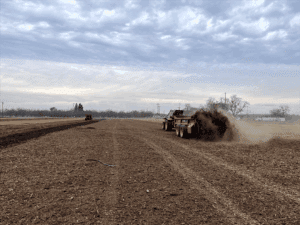
Addressing Nitrogen Tie-Up
Based on his longest-running almond trial, Holtz said most of the nitrogen from the chips had been released after seven years of incorporation.
In the first few almond orchards planted following WOR, growers noted stunted trees in the first year. This is due to the disproportionately large amount of carbon found in the wood chips in relation to N in the soil.
Soil microbes perform best on a balanced diet when the C:N ratio is 24:1. These conditions stimulate microbes, promoting plant residue decomposition and releasing nutrients into the soil.
When the ratio is significantly above that, microbes use the N mostly for energy used to break down the high-C residue, tying it up and making it unavailable for plants. But the wide gap is only temporary as the microbes begin to decompose the organic matter, narrowing the C:N ratio and slowly releasing the N.
To compensate for N tie-up, Holtz recommended applying 5 to 8 ounces N per almond tree in the first year following WOR, spread out over the season with no more than 1 ounce per tree per application. This compares to UC’s recommended 3 ounces N per tree per season for the first year of a conventional almond orchard.
During the second and subsequent years, Holtz said growers can fertilize their WOR almond orchards the same as they would a conventional orchard.
With walnuts, he said they are still fine-tuning N for young orchards planted after WOR. Researchers also are testing the best forms of N to use.
In the Rio Oso trial, Conant is applying 3 ounces of additional N on top of his standard 5 ounces per tree through microjet sprinklers.
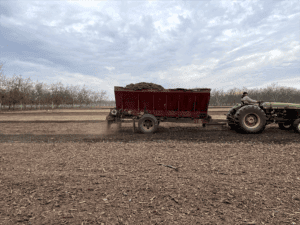
It’s Still Early
While growth differences among the different rootstocks at the fifth-leaf trial were visually apparent, Reyes said there were no statistical differences between tree growth in the chipped compared to the unchipped treatments.
Reyes and her crew individually harvested trees in the 4-acre block for the first time in 2024 and also found no statistical yield differences between the chipped and unchipped treatments. But she was quick to point out that this was their first harvest and they hoped to note any long-term effects between the two treatments.
“We’ve been tracking soil nutrients from the beginning of the trial and will be collecting data on yields,” Reyes said. “We will be able to see if there are cumulative effects as there are in almonds. What are we going to see? We don’t know.”
In a long-term WOR almond trial, Holtz said they found the recycled treatments yielded 2,000 pounds more per acre cumulatively over 12 years of harvest than the treatments that did not receive wood chips.
“Every year we’ve seen slightly greater yields with the WOR,” Holtz said. “There was only one year where there were significant differences, but it accumulated over time. We think that’s due to the organic matter and increased nutrient holding capacity.”

Vicky Boyd | Contributing Writer
A veteran agricultural journalist, Vicky Boyd has covered the industry in California, Florida, Texas, Colorado, the South and the Mid-South. Along the way, she has won several writing awards. Boyd attended Colorado State University, where she earned a technical journalism degree with minors in agriculture and natural resources. Boyd is known for taking complex technical or scientific material and translating it so readers can use it on their farms. Her favorite topics are entomology, weeds and new technology. When she’s not out “playing in the dirt,” as she calls agricultural reporting, Boyd enjoys running, hiking, knitting and sewing.







